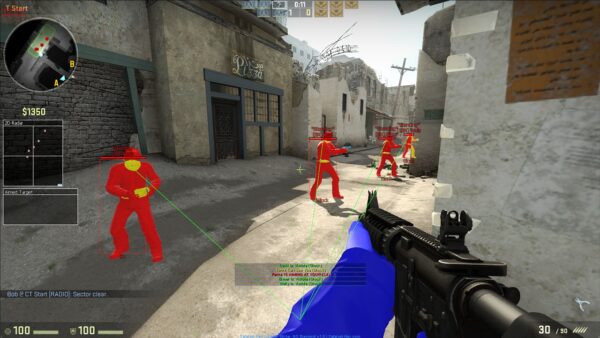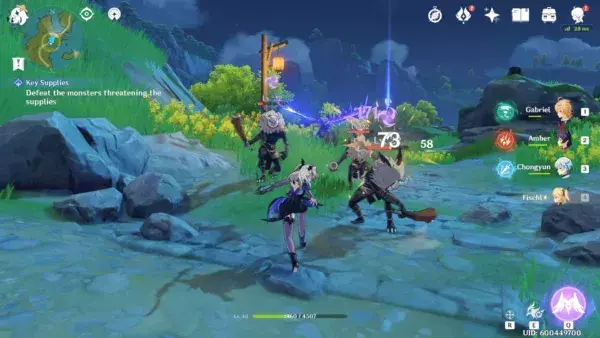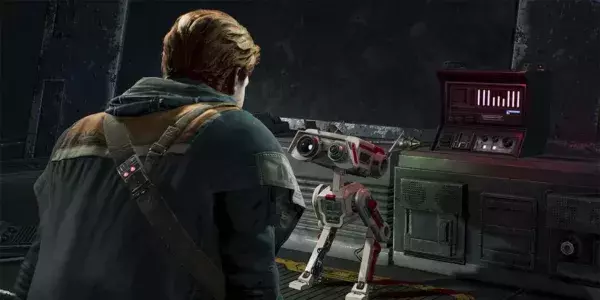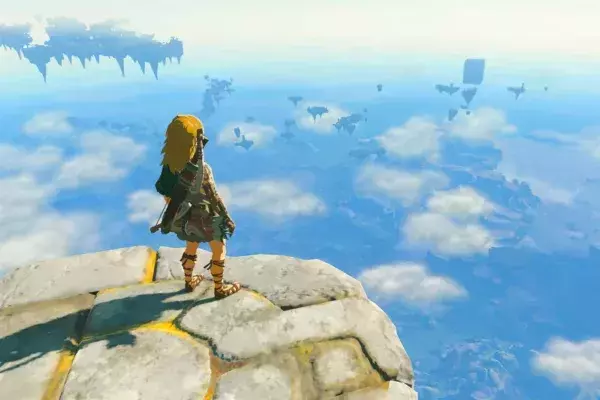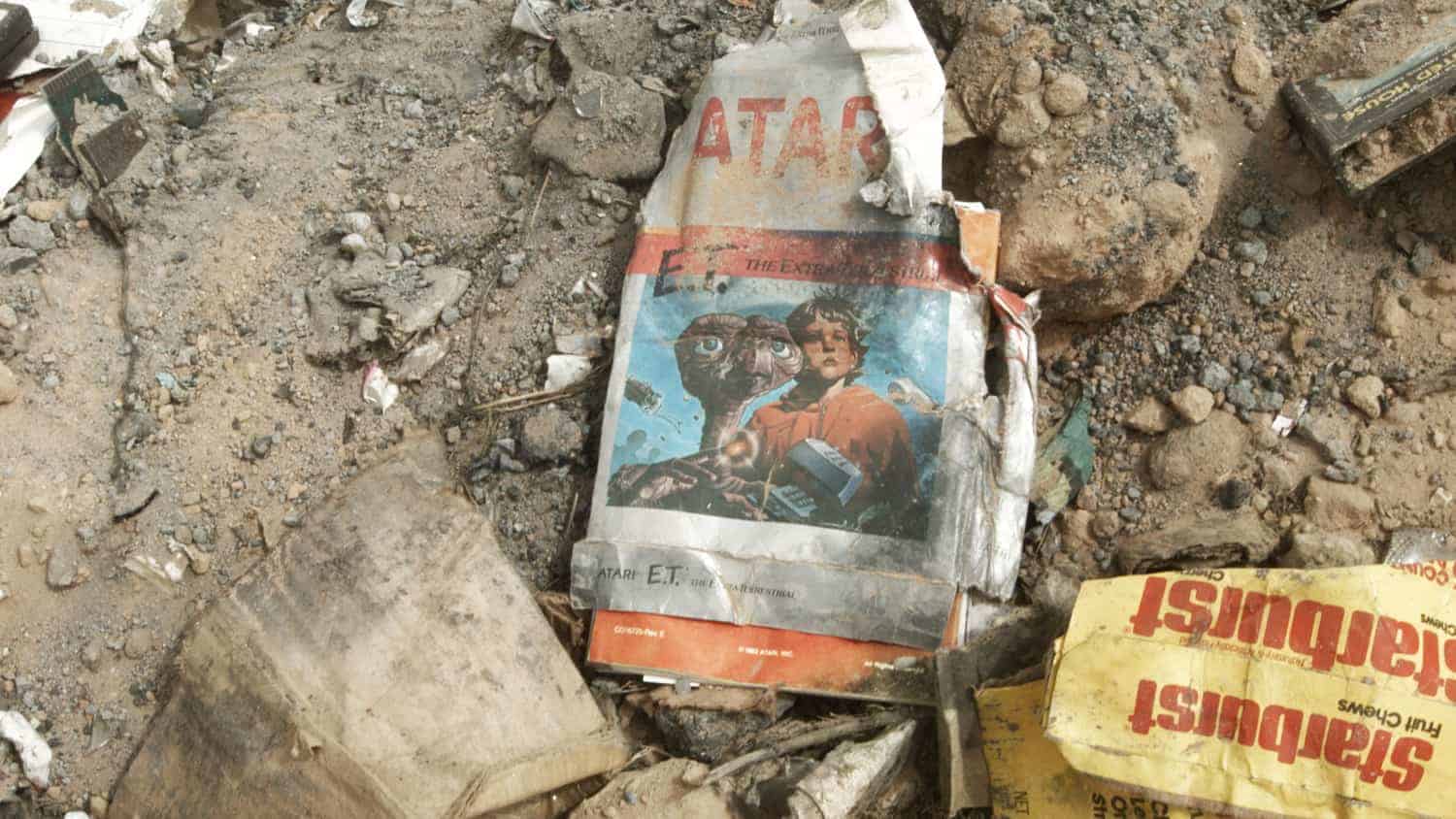
When you make video games, there are aspects of the job that go way beyond the basic work experience. I’m not talking about the hours or the pressure. I’m talking about the possibilities, the unanticipated increments that accrue from bringing entertainment to people you don’t even know. This became clear to me on an April afternoon in 2014 in Alamogordo, New Mexico, while excavating the city’s garbage dump for the lost E.T. cartridges. As I look out over the vastness of the desert, a phrase comes to mind: ‘The Sands of Time’.
The desert is amazing in that something so huge is made up of such small parts. It’s a collection of tiny individual grains which combine to make an enormous whole. Sand is fascinating to me; it’s a solid that flows like a liquid. And one place where flowing sand becomes significant is an hour-glass.
The hour-glass is nature’s traffic jam. I turn it over and every grain in the top is trying to commute to the bottom. After a while, they all get through. You turn it over again for the evening commute and the same bunch of sand moves back to the other end. However, if I trace the path of each grain of sand, I see no two journeys are ever exactly the same. They go in a different order and hang out with different neighbours on each trip. Some grains are together frequently, and some never meet. And then there are ones that connect once and don’t reconnect until many trips later. People are like grains of sand in an hour-glass.
Broadcasting
I have always thought of video games as a broadcast medium. I’ve touched millions of lives through my games. It’s done at a distance, but done nonetheless. The fan mail I’ve received over the years is a delightful testament to this fact. Whenever someone plays my game, it plants a seed in the life path of the player. Seeing all the people here in Alamogordo, I realise that every one of them has been drawn here by a seed I planted over 30 years ago. The thing is, when I plant a seed remotely in someone’s life, I never know if their path will cross my own and what fruit it may bear. By putting this game out into the world, I became part of millions of journeys. Today, hundreds of them are converging in Alamogordo. This isn’t a garbage dump; it’s a crossroads in time and space.
So many hugs and handshakes. Some are first-time meetings, some are reunions, but everyone here has one thing in common: they feel a connection with the E.T. video game – and, by extension, me.

Howard Scott Warshaw, in full desert adventurer mode.
They are all here, proudly displaying their E.T. regalia. Some purchased, some homemade, but every piece is a precious talisman brought to the altar for sanctification (the ritual for which appears to consist of getting my autograph on it, whatever it may be). Over time, I’ve learned events like this demand preparation. That’s why I bring a cache of indelible markers, in high-contrast colours.
I have never met most of today’s attendees. There are a few happy exceptions, however, and one remarkable exception to the exception.
Zak Penn and the film crew are here. They are all recent additions to my life – and welcome ones. As a video producer myself, I always enjoy watching a production crew in action, and these people are good! It’s a pleasure to watch their smooth execution and high level of professionalism.
Mike Mika is here, too. Mike is an important part of the video game world, and our paths have crossed before, starting many years (and several Yars) ago. Mike and I first talked in the mid-1990s when he was developing a Game Boy version of Yars’ Revenge. He is a committed and talented game maker. We became friends, and our paths have run parallel ever since, occasionally crossing. I’m enjoying spending time with Mike again, and today he introduces me to a good friend of his, Ernie Cline.

Ready Player One author Ernest Cline, always the devoted nerd, showed up at the Alamogordo dig in his DeLorean.
You can tell Ernie is here by the ANORAK licence plates on the DeLorean parked at the dig site. The gull-wing doors went up once the storm subsided, revealing a life-size E.T. sitting in the passenger seat. The doors will go back down when the wind returns to prevent the DeLorean from becoming a sandbox with wheels.
Ernie wrote one of my favourite novels, Ready Player One, but that’s not why he’s here. He came because Ernie loves classic games and he cannot resist this kind of opportunity. Ernie is, and I say this with reverence, a nerd’s nerd. That’s not how he puts it. Ernie describes himself as an enthusiast and a gentleman adventurer. The thing I like about him is he lives up to these titles Ernest-ly.
Upon meeting Ernie, he presents me with a real Indiana Jones-style side bag (containing an autographed copy of Ready Player One) and a full-sized bull-whip. This is handy since my old whip from my Atari days is long past its last crack, though I wonder if (and how) he knew.

Released in 2014, Atari: Game Over attempted to solve an urban legend: were excess copies of the doomed E.T. game buried in the New Mexico desert?
I’m touched by his thoughtful generosity and awestruck at meeting an international bestselling author. Meanwhile, he is telling me how much he enjoys and admires my games. It’s truly an amazing moment in my life. I’m hanging out with a bunch of talented and accomplished people, all because I made some games over three decades ago that touched their lives.
This is the magic of the video game industry. It’s the opportunity to create a positive connection with millions of people. As they continue their journey, and I continue mine, no one knows where or when those paths may cross. But it all starts with doing something I love: making a video game.
Random factor
Serendipity plays a major role in the video game world. You never know if a concept will work until you try it, and if it doesn’t work, you never know from where (or if) a solution will come. We even add randomness to games to make the play and experience less predictable in many cases. The one place you don’t want any randomness is when debugging a game. It’s an interesting challenge to create a non-random version of a random event. The solution: a pseudorandom number generator. It gives you the same random sequence every time. It’s faux-serendipitous.


